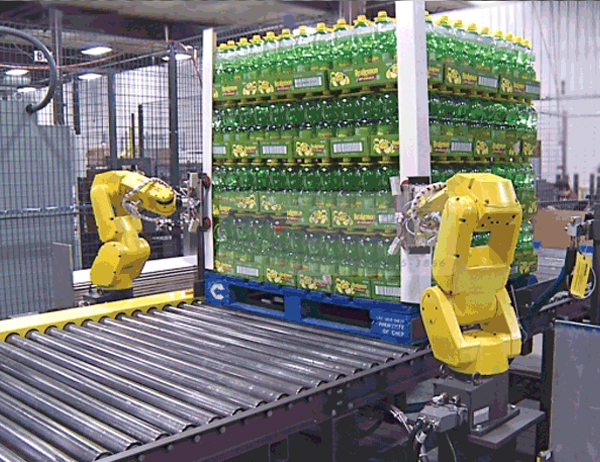The internal details and design of the robot are all internal secrets of each robot manufacturer. It is impossible for me to get it, and even if I do, I dare not tell it out. However, from the limited data, we can still summarize some general structural designs for SCARA robots. The shape of the SCARA robot is roughly as shown in the figure below. The first and second axes have the same structure, and both are driven by servo motors and harmonic reducers. However, due to cost considerations, there are also cases where the servo motor is replaced by a stepper motor, or the harmonic reducer is replaced by a planetary reducer or RV reducer. However, the first and second axes of the current SCARA robot still mainly use servo motors and harmonic reducers. The 3-and 4-axis designs of the SCARA robot are relatively rich and diverse. According to the general categories, it can be divided into two categories: the first category is decoupled, that is, the drive of the 3-axis and the 4-axis are separated, and it is divided into a spline shaft and a ball screw, which are driven by two motors respectively for lifting and rotating. Two degrees of freedom.

The second type of SCARA robot is a coupled type, that is, the 3-axis and 4-axis drives are coupled and interact with each other, and is realized by a ball screw spline shaft. A single motor cannot achieve separate rotation or lifting, and must be driven by two motors at the same time to achieve this. The structural advantages of the SCARA robot decoupling type are that the design is relatively simple and the price is relatively cheap. The disadvantage is that the parallelism between the spline shaft and the ball screw is high, making assembly difficult. The advantages of the coupled structure are compact design and light weight. The disadvantage is that the price of ball screw spline shaft is high, and there are very few manufacturers, which is basically a monopoly. In addition to the differences between decoupling and coupling types, SCARA robots from different manufacturers have various forms of design of reduction devices for the distribution of 3-and 4-axis motors, each with its own advantages and disadvantages, so I will not explain them one by one here.